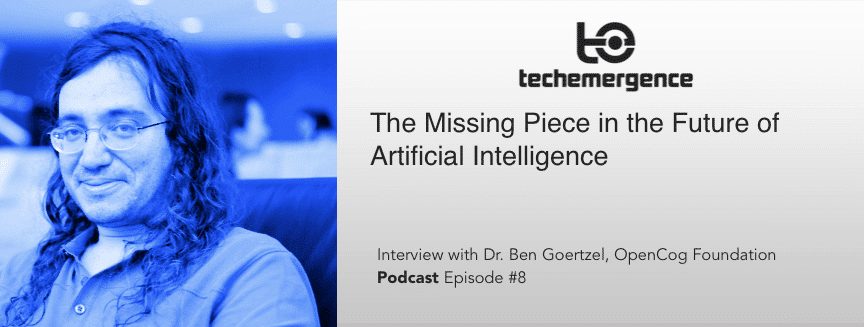Since the inception of the discipline of artificial intelligence (AI) in the 1950s, progress in the field has advanced at a rapid pace. We have seen the development of early neural networks, game AI, the Turing Test, and theories involving expert systems and intelligent agents, but according to Ben Goertzel, there is a specific element of AI today that is significantly missing.
Goertzel is chairman of the board of the OpenCog Foundation, and a renowned researcher and author in contemporary AI. He has dedicated his career to AI and its various applications in fields such as gaming, robotics, bioinformatics and financial prediction, and more specifically to “creating benevolent superhuman artificial general intelligence,” as he says on his website.
The Missing Link
According to Goertzel, the missing element is what he calls cognitive synergy. Goertzel explains that the human brain is comprised of an “assemblage of diverse structures and dynamics, built using common components and arranged according to a sensible cognitive architecture.” However, he points out that it is important to note that because of how the human mind has evolved, these components are intertwined in a very complex way – it is this that gives rise to human intelligence.
Cognitive synergy is the intermeshing of various intelligent components into a structure in which these individual aspects compliment and support each other in a similar way that the components of the human brain and body do. For Goertzel, this is what is currently lacking in the field of AI and what this area of research needs in order to progress far enough to produce a human-like intelligence.
The OpenCog Foundation
The OpenCog is a nonprofit, open-source organization founded in 2011. The projects involve a series of collaborative efforts that has teams throughout the world. These teams are working toward developing a thinking machine that encapsulates a form of cognitive synergy.
“The OpenCog project has two aspects really. One aspect is that we’re just building a toolkit of useful AI tools, which can then be deployed within a variety of vertical markets and specific applications,” says Goertzel.
The commercial applications have been wide ranging, including language processing and learning, machine learning, marketing data analysis and music listening data analysis.
“The other aspect of OpenCog,” Goertzel continues, “which is more directly exciting for transhumanists, is to use OpenCog to create a thinking machine. Granted, the aspiration is pretty big and we want it to be the next step beyond human beings.”
The OpenCog team’s initial step on the way to the think machine is to develop a “robot toddler.” Goertzel believes that once they can achieve an AI with the intelligence of a 3-year-old child, subsequent steps would not be too difficult. This is because, Goertzel explains, a toddler has all the basic common sense of an adult, in that the cognitive mechanisms are already present. From 3 years onward, he says, it comes down to learning and maturation of the mind.
Even the creation of toddler-stage AI is a massive leap from the AI technology in existence today. There are still a number of important steps to be taken before we can reach this stage. OpenCog has teams in the four corners of the world working on different aspects of this project, such as learning and reasoning components. While these work together in the short and long-term memory phases, Goertzel says more work needs to be done to get all the different aspects to work together in a more synergistic way in order to create an intelligent agent.
“The next challenge we have during the next year, year and a half is to make OpenCog’s various components work effectively as an integrated system for controlling an agent,” he says.
Once we get underway with the development of an intelligent agent. Where could AI go from there? Although Hollywood may present rather a dystopian future for transhumanism, futurist Ted Chu, author of Human Purpose and Transhuman Potential: A Cosmic Vision for Our Future Evolution, presents a much more positive picture. According to Chu, by transcending our own biology through transhumanism, we will be much closer to achieving our ultimate evolutionary purpose.
Image credit: Physics Org



















